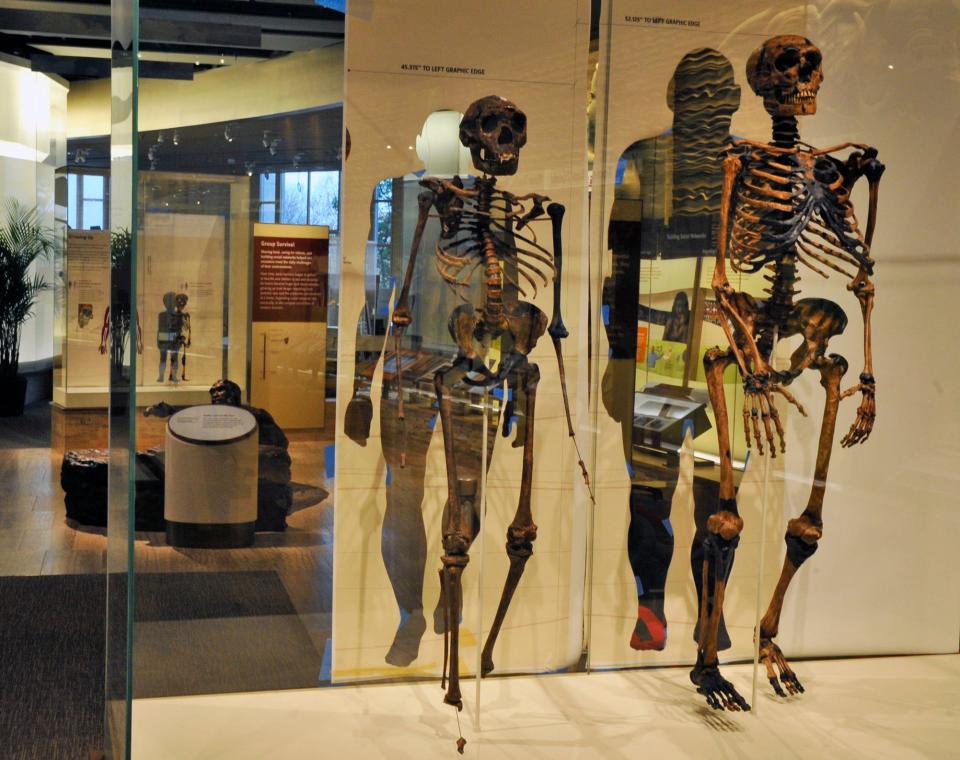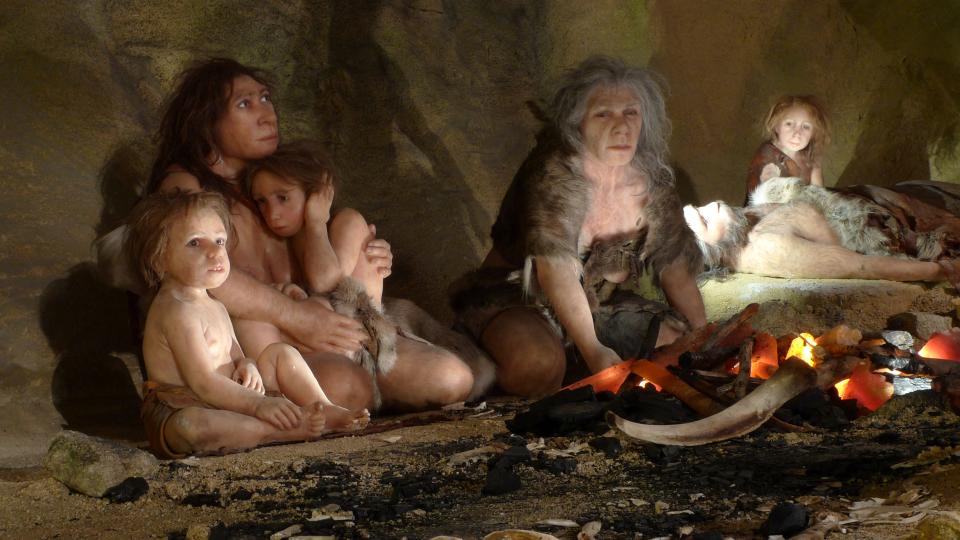-
Scientists found new clues about one of the last living Neanderthals.
-
By sequencing the DNA from one of the Neanderthal’s teeth, they discovered a completely new lineage.
-
The DNA indicates recent inbreeding that may help explain why this species went extinct.
Scientists are one step closer to solving the mystery of humanity’s last great extinction: why the Neanderthals died off.
The Neanderthals are our closest ancient human relatives. But around 40,000 years ago, the last of them mysteriously disappeared.
Now, a recent study that analyzed the DNA from one of the last of these ancient humans is giving scientists clues about why they vanished while modern humans continued to thrive.
The mystery around one of the last Neanderthals


Tens of thousands of years ago, a Neanderthal nicknamed Thorin lived in southeastern France, not long before his species went extinct.
His remains were first discovered in 2015 and sparked a debate between archaeologists, who dated him to between 50,000 to 42,000 years old, and geneticists, who insisted his DNA showed he was closer to 100,000 years old.
The discrepancy launched a seven-year investigation, culminating in a recent study in which geneticists looked at a handful of Neanderthals’ DNA from around the world and compared them to Thorin’s DNA, starting with the assumption that he was 50,000 years old instead of 100,000.
“At this time, the geneticists decided to calibrate their own tools and to change everything we knew about all Neanderthals,” archaeologist Ludovic Slimak, lead author on the new study published in Cell Genomics, told Business Insider. Namely, that they were all a part of a single homogenous population.
Because of how different his DNA was from Neanderthals closer to his age, the researchers realized that Thorin must have belonged to a completely new Neanderthal lineage. They estimated his ancestors’ line had split around 103,000 years ago.
This explained why Thorin’s DNA seemed so much more ancient than his bones. His DNA resembles Neanderthals who lived over 100,000 years ago, but Thorin was 50,000 years younger, according to the recent study.
What could have caused this genetic split? The researchers suspect that Thorin lived in an isolated community that had little to no contact with other groups from the time they diverged until Thorin’s death.
That means, people within the community reproduced amongst themselves for more than 50,000 years, spawning a unique lineage distinct from other Neanderthal groups, according to the researchers.
As you can imagine, a community isolated for that long will inevitably lead to inbreeding, and the researchers did indeed find evidence of that in Thorin’s DNA.
The community’s isolation also helps explain why Thorin was among the last of the Neanderthals. Inbreeding leads to a lack of genetic diversity, which can make populations more vulnerable to disease, harmful mutations, and environmental changes.
While one isolated community can’t speak for an entire species, it can point to a key behavior that sheds new light on why these human relatives died out.
“We have this incredible extinction, which is the last great extinction of humanity,” Slimak said.
Neanderthals kept to themselves, which could help explain their extinction


Thorin’s community wasn’t isolated because of geography. They were isolated because they chose to be, Slimak said. “We’re facing a border, a social border,” he said.
In fact, other Neanderthals lived just a couple weeks’ walk from Thorin’s in the Massif Central around the same time.
If Thorin’s relatives did ignore their Neanderthal neighbors, that means the group’s isolation wasn’t only genetic but was also cultural and social, Slimak said.
“It’s something very important and very central to understanding what was this population and, at the end, why and how they disappeared and they died out,” Slimak said.
While isolation may have worked for Thorins’ ancestors for millennia, eventually their luck ran out. “Their little social network just collapsed onto themselves and just died in a whisper,” Slimak said.
Modern humans’ large social networks may have helped them survive


How universal this isolationist behavior among Neanderthals was is unclear. If resources in the area were scarce, the Neanderthals may have started becoming more insular to protect their own group.
“Maybe this idea that one group kept to themselves maybe is not so crazy in that kind of competitive environment,” said April Nowell, a Paleolithic archaeologist with the University of Victoria who was not involved with the study.
As Neanderthals’ numbers dwindled, maintaining smaller and smaller groups would have put their future at risk whenever a family member died.
Many experts believe that Neanderthals’ small group sizes led to their extinction, which would have made them vulnerable even without added stressors like increased competition from humans.
Meanwhile, modern humans didn’t seem to have had the same tendency to form insular communities. Instead, they traveled far and wide and formed large social networks, Slimak said.
“We see modern human populations that seem to have these wider social networks and are exchanging genes with potential mates on a wider geographical region,” Nowell said.
Modern human groups were expanding and becoming more genetically diverse. That made them better equipped to handle any sort of accident or natural disaster, Nowell said.
On the other hand, with smaller Neanderthal populations, even losing a handful of breeding-age individuals impacts future generations, she said.
“I really do think that the genetic isolation is telling us something interesting about Neanderthals and their challenges and eventually their extinction,” Nowell said.
Read the original article on Business Insider
